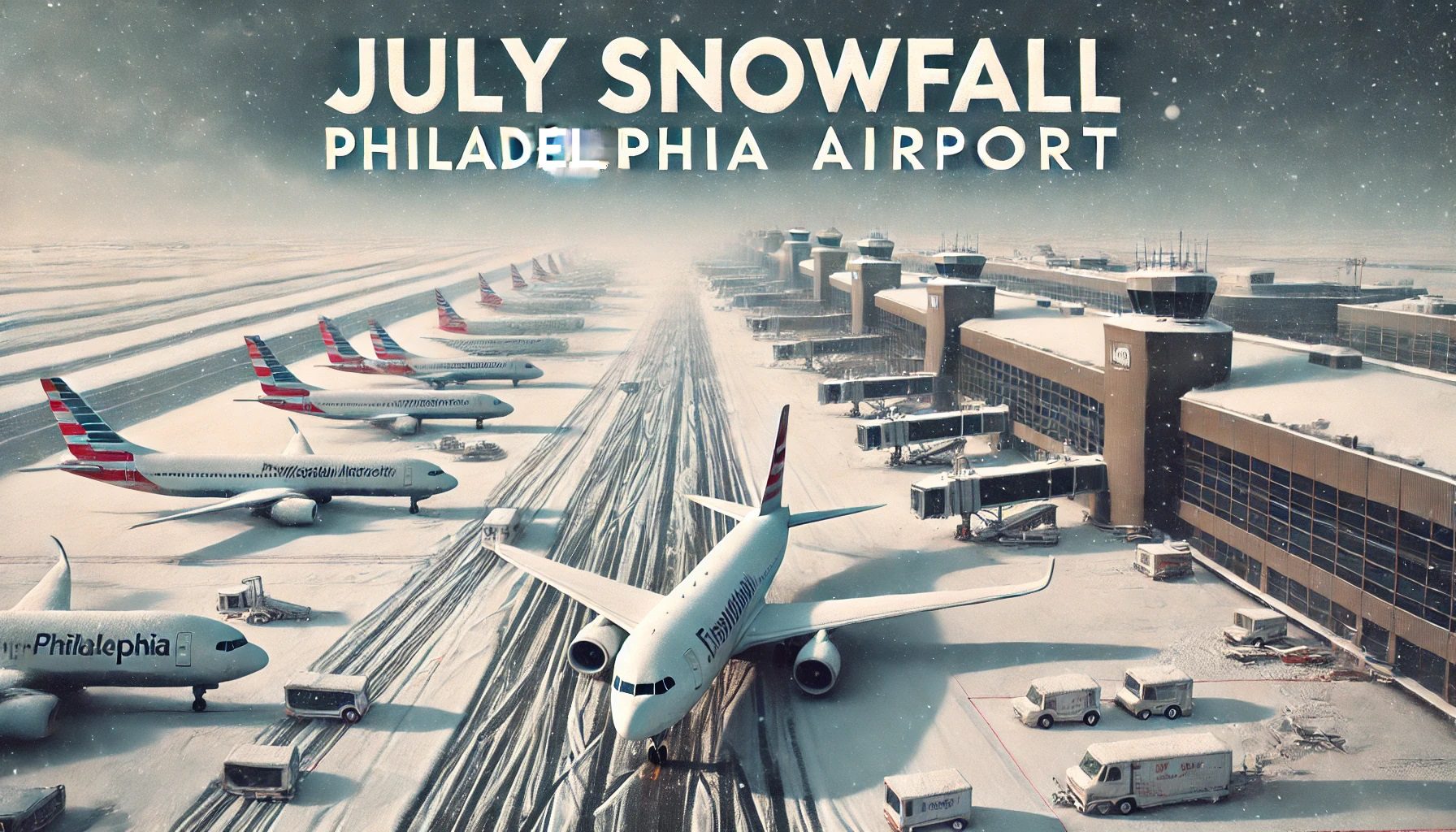Snowfall History

July snowfall philadelphia airport – Snowfall in Philadelphia during the month of July is an extremely rare occurrence. In fact, there has never been a recorded instance of measurable snowfall at Philadelphia Airport in July since records began in the late 1800s.
In the annals of meteorological anomalies, the July snowfall at Philadelphia Airport stands as an enigmatic event. Yet, its ethereal beauty parallels the captivating rise of Katie Britt , a political star whose trajectory has defied expectations. As Britt’s influence ascends, so does the intrigue surrounding the July snowfall, a celestial dance that left an imprint on the city’s collective memory.
The average snowfall in Philadelphia for the entire year is approximately 22 inches, with the vast majority of that snow falling during the winter months. The city’s coldest month is January, with an average snowfall of 7.5 inches. In contrast, July is Philadelphia’s warmest month, with average temperatures in the mid-80s Fahrenheit.
Amidst the unprecedented July snowfall that blanketed Philadelphia Airport, casting an ethereal glow upon the tarmac, one could not help but draw parallels to the tumultuous political landscape. Just as the wintery precipitation defied seasonal norms, so too did Glenn Youngkin’s recent trip to Israel challenge conventional wisdom.
As the snowflakes danced in the wind, they seemed to whisper tales of a changing world, where the boundaries between nations and ideologies were blurring, and the pursuit of peace remained an elusive dream.
Notable Snowfall Events
While there have been no recorded instances of snowfall at Philadelphia Airport in July, there have been a few notable snowfall events in the city during other months of the year.
- On January 23, 1996, Philadelphia experienced its heaviest snowfall on record, with 30.7 inches of snow falling in a single day.
- On February 5, 2010, the city was hit by a blizzard that dumped 22.4 inches of snow on the city.
- On March 14, 1993, Philadelphia received 10.9 inches of snow, which was the city’s latest measurable snowfall on record.
Weather Patterns and Causes: July Snowfall Philadelphia Airport

The occurrence of snowfall in Philadelphia during July, a month typically associated with warm and sunny weather, is a rare meteorological phenomenon that requires a unique combination of atmospheric conditions. Several weather patterns and atmospheric factors contribute to the formation of July snowfall in Philadelphia, including cold fronts, low-pressure systems, and the influence of climate change.
Cold fronts, which are boundaries between cold and warm air masses, play a crucial role in July snowfall events. When a cold front moves through Philadelphia during the summer months, it can bring with it a significant drop in temperature and a change in wind direction. The cold air behind the front can cause temperatures to plummet, creating conditions favorable for snow formation.
Low-Pressure Systems
Low-pressure systems, characterized by converging winds and rising air, are another key factor in the formation of July snowfall. As air rises within a low-pressure system, it cools and condenses, forming clouds. If the air is cold enough, these clouds can produce snow. In the case of July snowfall in Philadelphia, low-pressure systems often develop over the Great Lakes region and move eastward, bringing with them cold air and moisture that can lead to snowfall.
Climate Change
The impact of climate change on the frequency and intensity of July snowfall in Philadelphia is a topic of ongoing research and debate. Some studies suggest that climate change may lead to an increase in the frequency of extreme weather events, including heavy snowfall, while others indicate that the overall trend may be towards milder winters with less snowfall. However, it is clear that climate change is altering weather patterns worldwide, and its potential effects on July snowfall in Philadelphia require further investigation.
Impact and Consequences

The rare occurrence of snowfall in July at Philadelphia Airport has far-reaching effects, impacting airport operations, the economy, and the social and cultural fabric of the community.
Airport Operations
July snowfall poses significant challenges for airport operations. The sudden and unexpected accumulation of snow can lead to:
- Flight delays: Snowfall can cause visibility issues, making it unsafe for planes to take off or land. This can lead to delays and disruptions in flight schedules.
- Flight cancellations: In severe cases, snowfall can force the cancellation of flights, leaving passengers stranded and disrupting travel plans.
- Safety concerns: Snow and ice on runways and taxiways can create hazardous conditions for aircraft, increasing the risk of accidents and incidents.
Economic Consequences, July snowfall philadelphia airport
July snowfall can also have a negative impact on the economy. The disruption of airport operations can lead to:
- Lost revenue for airlines: Flight delays and cancellations can result in lost revenue for airlines, as they are forced to refund or reschedule flights.
- Lost revenue for businesses: Businesses that rely on air travel, such as hotels, restaurants, and car rental companies, can also suffer from lost revenue due to decreased travel.
Social and Cultural Effects
Beyond the economic impact, July snowfall can also have social and cultural effects. The disruption of travel plans can lead to:
- Missed events: Snowfall can cause people to miss important events, such as weddings, conferences, and vacations.
- Changed plans: Snowfall can force people to change their travel plans, which can be stressful and inconvenient.
- Isolation: Snowfall can isolate communities, especially those that are heavily dependent on air travel for transportation.